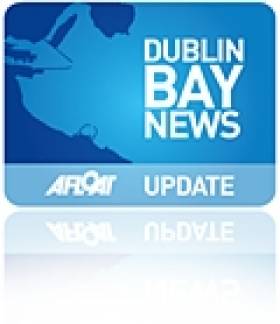Displaying items by tag: Red Bull Flugtag
Two Days Till Red Bull Flugtag Returns To Dun Laoghaire
#Flugtag - The long-awaited return of the Red Bull Flugtag to Dun Laoghaire Harbour is just two days away.
As previously reported on Afloat.ie, the event this Sunday 20 May will see over 50 teams attempt to push the limits of human flight as they launch their handcrafted flying machines in front of over 40,000 spectators.
The National Yacht Club invites its members to enjoy the spectacle “from your club’s best vantage point” with a barbecue as well as live music and entertainment from 1pm to 5pm.
Members should also be aware that there will be an exclusion zone in the Carlisle Basin with two patrol RIBs from the club to help channel the traffic.
It is also advised not bring your boat alongside the pontoons, as masts or high cabins would impede the view of the show.
The NYC’s launch service is not affected by the Flugtag, but there will be no renting of club boats this weekend.
For further details on the event, including road closures, parking and public transport, see the official Red Bull Flugtag event guide.
Dun Laoghaire Harbour Sees Return of Red Bull Flugtag This May
Taking flight from Dún Laoghaire Harbour on Sunday, 20th May, the Red Bull Flugtag will return to Irish shores this summer. It will see over 50 teams attempt to push the limits of human flight, as they launch their handcrafted flying machines in front of over 40,000 spectators.
Red Bull Flugtag challenges the brave and brainy to design, build and pilot homemade flying machines off a 9-metre high flight deck, in the hope of soaring into the wild blue yonder…or more often, to plunge into the waters below. Flugtag, which means “flying day” in German, pushes the envelope of human-powered flight but competitors need more than airtime to reach the podium. Teams are judged on three criteria: flight distance, creativity of the craft, and showmanship. These criteria have inspired flying tacos, prehistoric pterodactyls, and even Snoopy and the gang to grace the Flugtag flight decks!
In 2011, Dublin celebrated the 100th anniversary of the Red Bull Flugtag series and they are bringing back the madness to the capital on 20th May, 2018.
If you are interested in participating, applications open 21st February. Five-member teams of aspiring aviators and courageous craftsmen and women can apply for a chance to compete at Red Bull Flugtag 2018 by submitting flying-machine plans. The deadline to submit craft designs is 31st March.
Applying to participate in Red Bull Flugtag is free. Pilots and participants must be 18 or older.
Just One Week To Go Till Red Bull Flugtag
The Red Bull Flugtag celebrates its 100th event in Dun Laoghaire next Sunday, and organisers have posted details for spectators planning to spend the day cheering on those magnificent flying machines!
The site for the free event will open at 12 noon, with the show taking place from 1pm till 4.30pm. All public access to the event site is via Dun Laoghaire Harbour/East Pier beside the National Yacht Club (the viewing area for those with disabilities is on Carlisle Pier beside the Royal St George).
There are a number of road diversions and parking restrictions to be aware of, full details of which are listed HERE. Temporary signage will advise motorists of impending diversions, and there is ample parking available at the Pavilion, Bloomfields and the IMC cinemas.
Visitors can also arrive by public transport, with bus routes 7, 7a, 46a, 75 and 111 all running to Dun Laoghaire. DART services will also run every 30 minutes and extra capacity will be provided.
The organisers wish to remind all spectators that the Red Bull Flugtag is a family event, and the consumption of alcohol in public will not be permitted.
Watch the world flugtag record being set in Minnesota last year. Maybe a new one will be set in Dun Laoghaire next weekend?
Dublin To Host 100th Red Bull Flugtag
The Red Bull Flugtag will celebrate its 100th event when it comes back to Dublin this summer.
Twenty years on from the first flugtag in Austria, this year's contest promises an "Irish twist" on the formula, whereby homemade flying machines shoot off a 30-foot deck in the vain hope of not splashing into the water below.
Budding pilots will take their creative flying contraptions to Dun Laoghaire on 22 May for a day of entertainment and spectacle for all ages.
Organisers are hoping for "plenty of the outrageous and innovative machines for which the Red Bull Flugtag has become famous - and who knows, maybe we'll get a world record to round off what we hope will be the perfect event!"
For more details visit the Red Bull Flugtag Dublin 2011 Facebook page HERE.
































































